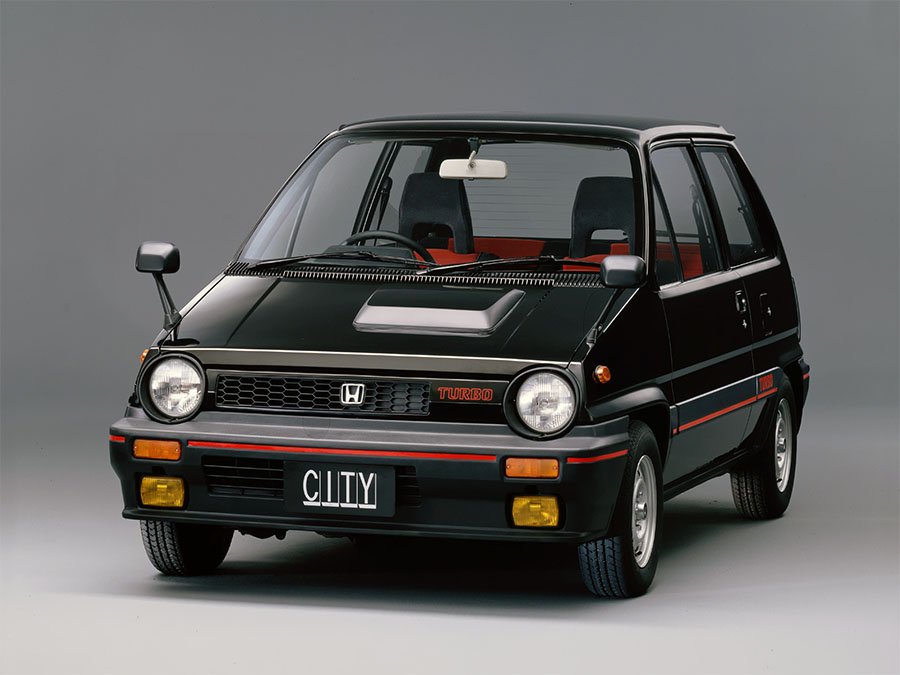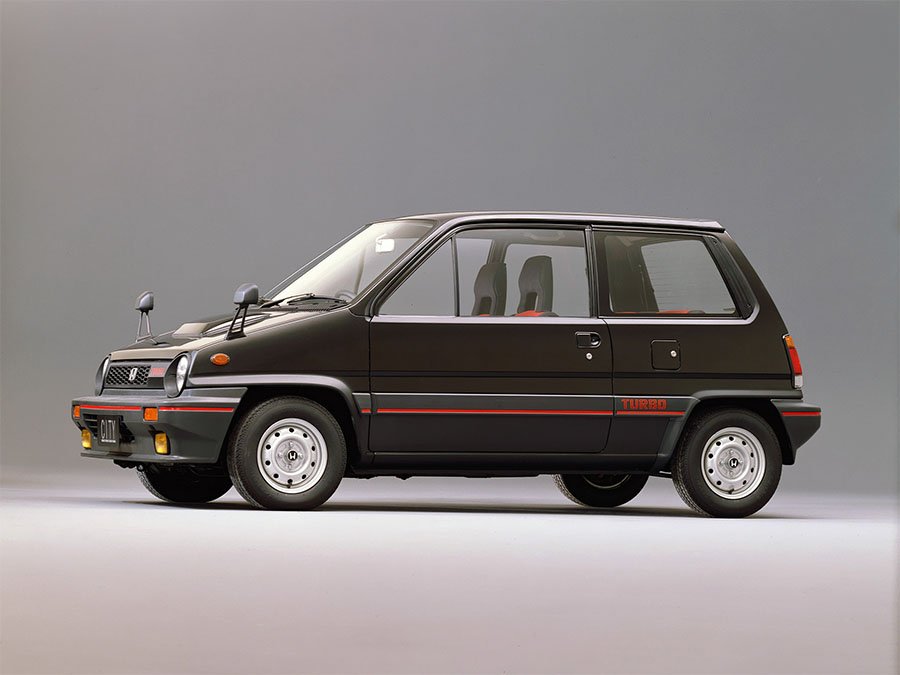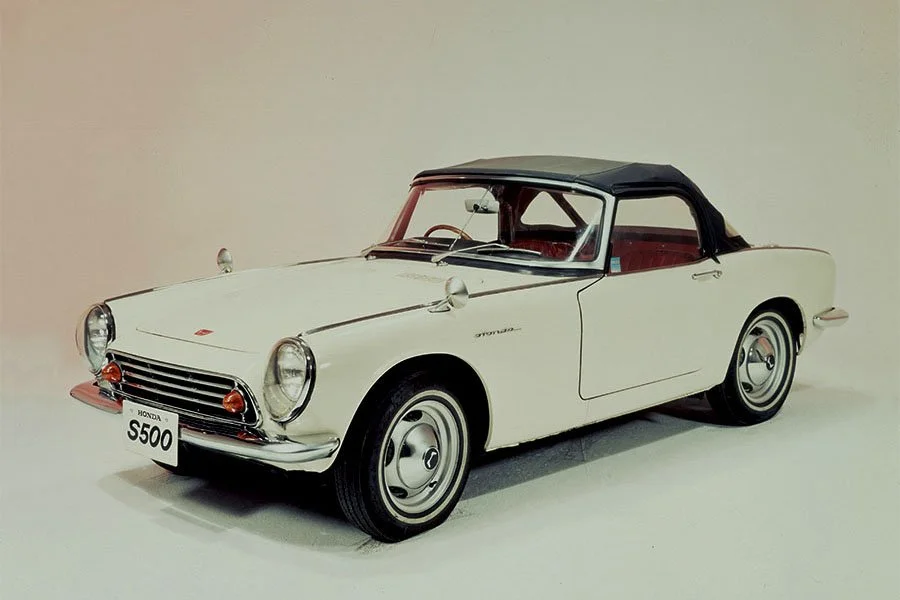Guide: Forced Induction, with Love from Mugen - a Historical & Technical Appraisal of the Honda City Turbo
/BACKGROUND
The first generation Civic launched in 1972 was a make-or-break model for Honda’s automobile division. Up until that point, the firm had predominantly focused on Kei cars for the domestic market. The exception had been the mid-size 1300 manufactured since 1969 which had been plagued by technical delays and ultimately proved too expensive.
Should the Civic have failed in a similar fashion as the 1300, Honda was likely to tap its car building operation on the head.
Fortunately, lessons learned from the slow-selling 1300 ensured the Civic was Honda’s first major international success; by the time production of the first generation iteration had come to an end in June 1979, nearly 937,000 examples had been completed.
In typical automotive fashion, the second generation Civic that followed was slightly bigger and more refined than its predecessor. However, Honda were not about to abandon their small car roots and, in 1978, work had begun on a new sub-compact class model: the City.
The 1970s Oil Crisis had played a significant role in catapulting the Civic to mainstream success. With the cost of fuel having risen dramatically, fuel consumption had suddenly become the most important consideration for a large number of buyers.
With this in mind, Honda’s remit for the City was to create the best economy car of the early 1980s. The company also wanted to target a young audience with the new model which greatly influenced every aspect of its design and marketing.
The production City was unveiled at the Tokyo Motor Show in October 1981. A front-wheel drive three-door hatchback, it was initially offered in economical E trim, sportier R trim or in one of two van configurations.
Meanwhile, Mugen founder Hirotoshi Honda (the son of company founder, Soichiro Honda) had begun work on a high performance City with a turbocharged engine and electronic fuel-injection system. The City Turbo concept also featured uprated brakes, suspension, wheels and tyres plus an array of cosmetic enhancements.
Upon assessment of the prototype, Honda’s board decided to give the green light to a production version. It went on sale in September 1982 and was presented to the public at the Tokyo Motor Show a few weeks later in October.
Famously, the City Turbo was Honda’s first forced induction model. At home, the company retailed it through their Honda Clio sales channel. The model was also exported to a handful of European countries in addition to Australia and New Zealand.
CHASSIS
The Turbo was based on the same pressed steel monocoque with 2220mm wheelbase as the standard City.
Similarly, an independent MacPherson strut layout was used for the suspension (coil sprung at the rear).
For the Turbo, Honda added a front anti-roll bar (one at the rear was already installed) plus progressive-rate coil springs.
The front brakes were uprated with ventilated discs replacing the solid-type used for the rest of the range. Drum brakes were retained at the back.
Ten-hole 4.5 x 12-inch steel wheels were half-an-inch wider than those fitted to other City variants. They were shod with high performance HR tyres as standard - a first for a car in this class.
Track dimension were 1370mm at either end.
Steering was unassisted and a 41-litre fuel tank from the standard City was mounted under the rear seat.
ENGINE / TRANSMISSION
In the engine bay was a turbocharged version of the CVCC-II ‘ER’ engine that had been designed specifically for the City.
A transversely-mounted inline four with single overhead camshaft, three valves per cylinder and wet-sump lubrication, it displaced an unchanged 1232cc thanks to a bore and stroke of 66mm and 90mm respectively.
For the Turbo, the City’s existing cast-iron engine block was topped with a new aluminium-titanium alloy cylinder head and magnesium valve cover. The combined effect of these was greater efficiency and a decent weight saving. The engine structure was also strengthened and frictional resistance much reduced.
The RHB51 turbo fitted to the City was a joint development between Honda and IHI with the former wanting something small and light that could run at high engine speed.s. Turbo pressure was set at 0.73 bar (0.75kg/cm2).
Instead of a single Keihlin carburettor (as fitted to the rest of the range), the City Turbo debuted Honda’s 8-bit digitally-controlled PGM-FI multi-point fuel-injection system.
The compression was reduced from 10.0:1 (in the City R) to 7.5:1.
Peak output was 99bhp at 5500rpm which represented a substantial gain over the City R which pumped out 67bhp at 5000rpm.
The torque rating was also improved with 108lb-ft on tap at 3000rpm compared to 72lb-ft at the same engine speed for the City R.
Transmission was through a five-speed manual gearbox and single-plate hydraulic clutch.
BODYWORK
To ensure the City offered passengers plenty of head and leg room, Honda adopted a distinctive ‘Tallboy’ style.
Other striking features included circular headlights either side of the full width grille, trapezoidal wheel wells and a small roof spoiler.
Initially, the exterior mirrors were mounted towards the leading edge of the front fender which exacerbated the City’s fun by slightly curious appearance.
Aside from the plastic pieces of body trim (bumpers and rubbing strips for example), body panels were fabricated from steel.
Honda equipped the City Turbo with a number of special features that helped differentiate it from the rest of the line up.
Up front there was a new apron with integrated chin spoiler, enlarged intake aperture and yellow-tinted fog lights.
Between the headlights was a new hex-pattern grille, the left-hand half of which was blanked off.
Further up, an asymmetrical power bulge was needed to resolve clearance issues for the turbocharged engine.
Down each flank was dark grey plastic cladding complete with a sporty red insert to match the front and rear bumpers. Underneath the rear bumper was a revised grille.
To finish, red Turbo graphics were applied to the front grille blanking plate, the cladding down each flank and on the tail gate.
Honda quoted a drag coefficient of 0.4 and zero lift.
INTERIOR
Honda also equipped the City Turbo with a number of exclusive interior features.
Both the sporty new three spoke steering wheel and gear lever were given a soft-touch plastic finish. A high quality gear gaiter was also fitted along with a new central control panel.
The standard front seats were ditched in favour of a new sports-type design. Upholstery was dark or light grey fabric for the seat bolsters and headrests. Light red or pale grey fabric was used for the seat centres and door panel inserts and the carpet was trimmed to match. The backs and sides of the front seats were trimmed in black vinyl. The face of each front seat came with an embroidered Turbo script. The rear seats were given a completely new centre pattern to the rest of the City range.
The City Turbo also came with a revised upper dash to include a new instrument hood and circular instead of rectangular fresh air vents.
The instrumentation itself was completely new. The large semi-circular speedo originally used became a rev counter. Housed within the rev counter arc was an LCD read out for road speed. Another LCD read out, this time for turbo boost, was located off to the left. Elsewhere, there were new sliding read outs for water temperature.
An orange instead of white typeface was used for the dash and switchgear.
OPTIONS
Customers could upgrade their City Turbo with a small number of optional upgrades.
Honda offered a basic audio system or their more expensive Bodysonic arrangement which enabled the occupants up front to feel music through the seats as vibrations.
There was also a tilt/slide sunroof with sun blind available and a set of alloy wheels.
Perhaps most famously, Honda had developed the City so that it could accommodate the firm’s optional 49cc Motocompo folding moped in the trunk.
WEIGHT / PERFORMANCE
At 690kg, the Turbo was 25kg heavier than the City R.
However, it was much faster in every respect. Top speed was 112mph (up from 93mph) and 0-62mph required just 8.5 seconds (down from 12.1).
HONDA CITY TURBO II
In November 1983, Honda added a second forced induction City to their line up: the Turbo II.
Nicknamed the Bulldog on account of its wide-arched stance, in addition to a more aggressively styled body kit, the Turbo II (covered separately) also came with a now intercooled version of the ER engine.
PRODUCTION CHANGES
In April 1984 Honda made a number of changes to the City Turbo, perhaps the most noticeable of which was the relocation of the exterior mirrors from the fenders to the corners of the front windows.
Additionally, an extra intake duct was added to the left-hand side of the grille between the headlights along with a reduced-size blanking plate.
A bank of cooling vents was cut into the side cladding ahead of the rear wheels. Because this was the original location of the side-mounted Turbo decals, these graphics were now relocated to the sill panel below.
END OF PRODUCTION
Production of the City Turbo was discontinued in February 1985 but the Turbo II was offered until September 1986.
Although no official production figures seem to be available for the two variants, we would estimate that a combined 40,000 may have been produced split around 50:50 between the Turbo and Turbo II.
CITY TURBO R (HYPER TURBO)
For the 1982 and ‘83 seasons, Honda and Mugen organised a domestic one-make racing series to help promote the City Turbo.
In preparation for life on track, Mugen carried out an extensive programme of modifications to what was variously dubbed the City Turbo R and Hyper Turbo.
Bodyshells were seam welded and left bare of all superfluous equipment. The suspension was suitably stiffened up, the brake system enhanced and fat cross-spoke alloy wheels shod with Bridgestone racing tyres.
In the cockpit was a full complement of safety gear to include bucket seats with racing harnesses, a roll cage and fire system.
Engine-wise, boost pressure of the production-spec. turbo was increased and an intercooler was added. Other equipment included a hot camshaft, bigger fuel injectors, an oil cooler kit and free-flow megaphone exhaust. Peak output went from 99bhp to 126bhp.
Externally, Mugen added massively widened fenders, deep side skirts and custom bumpers. An enormous intake scoop was added to the hood along with a pair of cooling vents. The rear arches were also vented and a spoiler was added above the tailgate. All of these additions were fashioned from lightweight plastic composite.
From 1984 the series switched to the City Turbo II as its platform of choice.
Text copyright: Supercar Nostalgia
Photo copyright: Honda - https://global.honda/







































